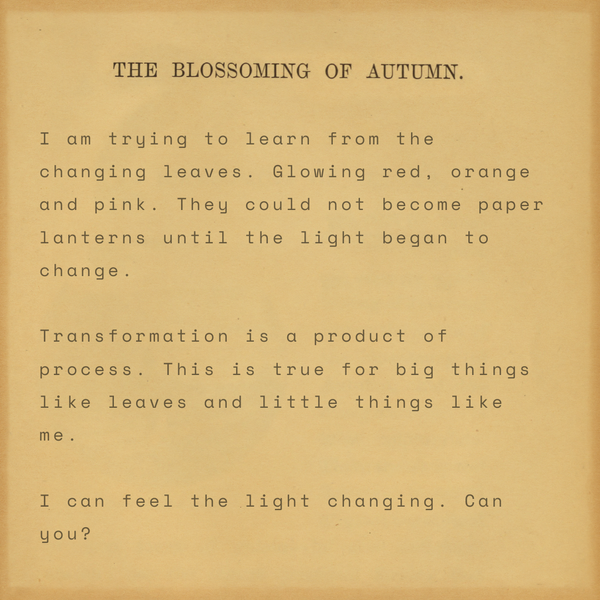Software helps my ADHD brain think
Tech is good*, actually *this one time

Let’s talk Personal Knowledge Management Systems, Arachne’s curse, broken brains, and how tech is good sometimes.
Everything you learn - from 3 year old you eagerly learning to count to 10 to 35 year old you reluctantly learning how NFTs work - is a thread of personal knowledge.
The time it takes to get to your office on a rainy day is a thread. The way your mother smelled is a thread. The sound of the door shutting one last time behind your ex is a thread. Everything you’ve read here? Threads! (I hope that’s okay!)
The thing with personal knowledge is…there’s a lot of it. And threads slip out of our minds every single day. That’s good a lot of the time. We don’t need to hold onto every thread. But sometimes, we lose threads we wanted to keep. Many people use Personal Knowledge Systems to help them hold onto those threads. PKMS are just systems used to catalogue notes, ideas, research and memories. Lots of people call their PKMS their second brain.
PKMS vary! Some people keep detailed journals, some have computers full of files. Some people write on napkins or moleskins. Believe it or not, if you have ever used Facebook, you’ve been using a kind of PKMS - it’s a place reminds you of your friends’ birthdays through alerts, or keeps track of memories with a feed that lets you scroll backward. Or at least it did both those things when you still used it.
And, of course, historically, lots of men treat their wives like secretaries and their secretaries like a PKMS, they don’t care how the system works as long as the women in their lives can always fetch information from it.
Do you know any husbands and fathers who don’t make any of their kids doctor’s appointments, remember their birthdays, make grocery shopping lists, or book summer camps because their wives will tell them what they need to know? Well, you know a man using his wife as his second brain!
Anyways.
One particularly effective PKMS is called Zettelkasten. Zettelkasten means “box of slips.” This kind of knowledge management involves keeping very small bits of information on index cards filed through subject headings or numeric systems. Like,
The German philosopher Walter Benjamin used notecards filed with a number system to keep track of the notes for his monumental Arcades Project. 1
could go on a single notecard. Perhaps filed under the subject heading, “Note-taking.”
Then, when you wanted to know about note-taking, you’d take out all the notecards under that subject heading, and many of the notecards those notecards cross reference, maybe things like “History of writing instruments” or “Taxonomy” and lay them all out together, arranging and rearranging until you found new connections.
The first time I read about Zettelkasten, it reminded me of how my brain works. I store little bites of information under subject headings. I close my eyes to see all the connections and cross-references. Then I choose my frame threads, radial threads, and viscid threads and start weaving a web. Knowledge isn’t about memorizing, it’s about understanding. And understanding is a weaving work.
Zettelkasten has been around since at least the 1500s. Carl Linnaeus used a version of this system while he became “the father of modern taxonomy.” The German philosopher Walter Benjamin used notecards filed with a number system to keep track of the notes for his monumental Arcades Project. And Anne Lamott is a fan too.
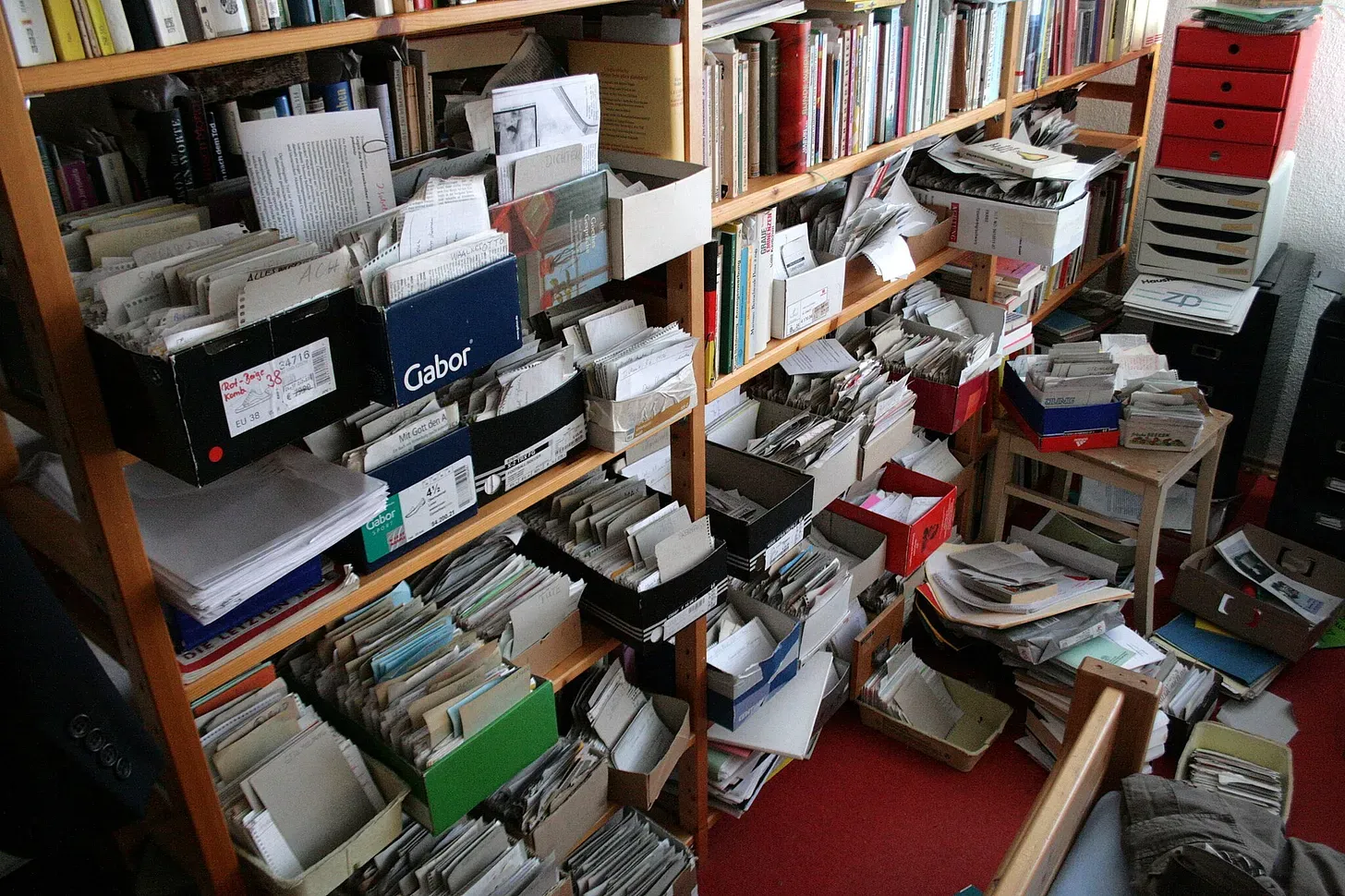
I’ve tried to make a physical version of the inside of my head before. But the thing with a traditional Zettelkasten is…you have to keep track of slips of paper. And if you’ve been here long enough, you understand there is no smart storage solution that keep a slip of paper safe from my absent-mindedness.
I toyed with other systems, in the physical and digital realm. But none worked the way my brains works. I could never figure out how to use them in a way that helped me think.
So I just decided that my brain and whatever I could cobble together on Google docs would have to be enough. But neither has been enough lately. And for the first time ever, my inability to organize my research and my thoughts has been severely impacting my ability to write.
I’m working with more threads these days. So I think that’s part of of it. But there’s something else going on. I don’t know if my memory is getting even worse because of long covid or something else. Or maybe I have just finally threaded too much into my already unsteady framework of a brain.
Whatever is going on, weaving the connections in my head into words that can connect has become a mythological feat - something for the gods, not mere mortal me.
When Arachne claimed she could weave wonderful things, Athena cursed her and turned her into the very first spider. A small thing in a corner that weaves wonderful things no one ever looks up to see. I’ve always felt a bit like a house spider.
Have you heard of the Barn Funnel Weaver Spider? If you haven’t heard of them, you’ve seen them. They’re some of the most common house spiders in the world. They go by other names, Common House Spider, Drain Spider, Lesser European House Spider. Their Latin name is Tegenaria Domestica. Tegenaria is their Genus and Domestica is their species. Domestica is from domesticus which means “belonging to the house.” This spider does belong to the house, to nearly all houses.
According to the British Natural History Museum, the Barn Funnel Weaver is making its final worldwide migratory moves and “expanding their range in the north of England and Scotland. Before long, few locations where there are houses will remain free of them.” Common House Spider, indeed. I’m moved to ask on behalf of this eight-legged weaver what I’ve often asked on behalf of myself,
I know this creature belongs to the house now, but what did it belong to before the house? And what did we call it then? - A Defense of the Common House Spider
I don’t mind weaving in corners. But lately, I find myself in a corner with tangled thread. And it’s not just a pile of my work. It’s also so much of my life - the memories and insights that make up my experience of mortality - are lost in that tangle. I can’t find the right threads. I’ve felt frantic and overwhelmed and very, very small.
And then last week, I found Capacities. And, I don’t know, I feel like everything is going to be okay. I mean, I’m no Arachne or even Barn Funnel Weaver. But I am going to be able to do my weaving work again.
This is how Capacities describes itself:
Like an artist's studio, Capacities is a place for all your information. It stores your knowledge and can resurface it, right when you need it. It’s your own studio to collect, connect and reflect – a place to make sense of the world and to create amazing things.
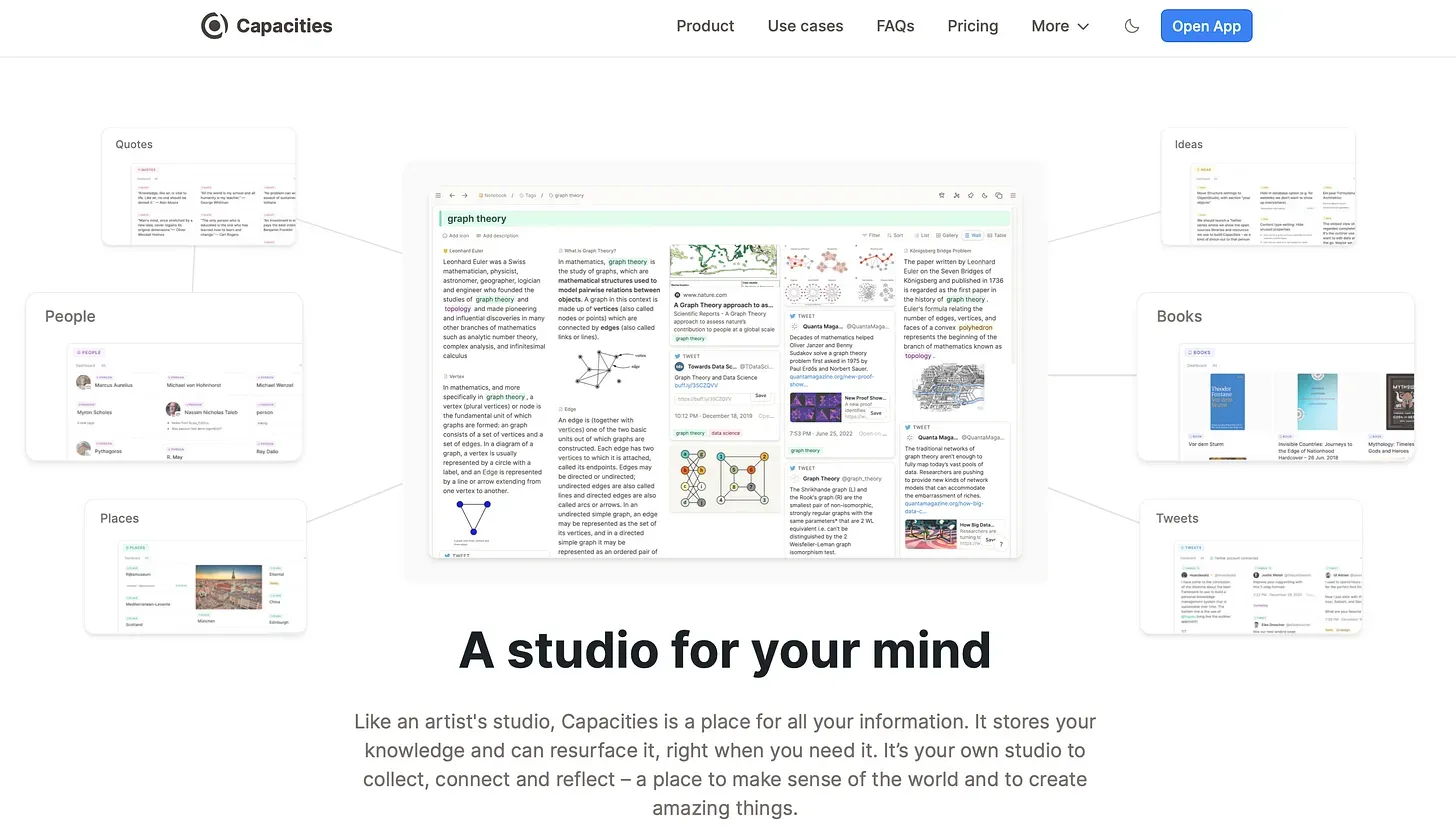
Me? I’d describe it as all of that and an adaptive aid. It’s not a second brain for me, it’s helping me use my only brain. It works with my processing disorders, instead of trying to override them.
Notes, thoughts, images, sounds, pdfs, zettelkasten cards and projects are all organized through tags, instead of files. Like here is my Capacities Zettel about Walter Benjamin,
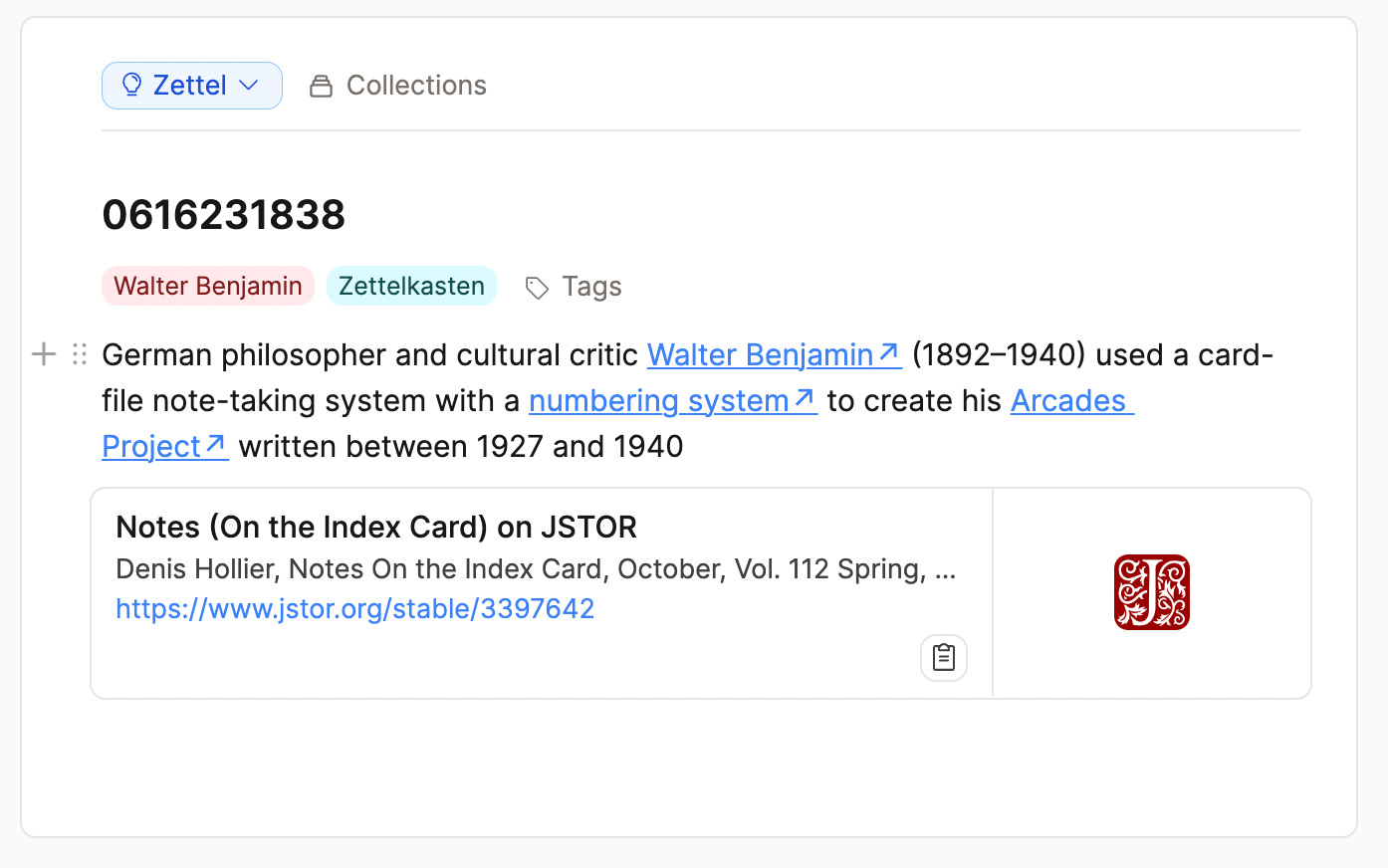
You can click on a tag and see the graph of related notes across all your categories - audio, cards, pdfs, longford, all of it. It looks a lot like a web, or a constellation. Or maybe a cosmic web?
I've Slept With My Baby Blanket for 36 Years
I could be embarrassed about my baby blanket. Instead, I'll tell you everything it's taught me.
Here’s an example of connections made through the notes I took for an upcoming newsletter about butterflies. Well, part of the newsletter is about butterflies. These are the notes for that part. Each point is longform writing, a note, a pdf, academic article or image. Watching it expand is just so damn satisfying. (The expansion happens like one second in.)
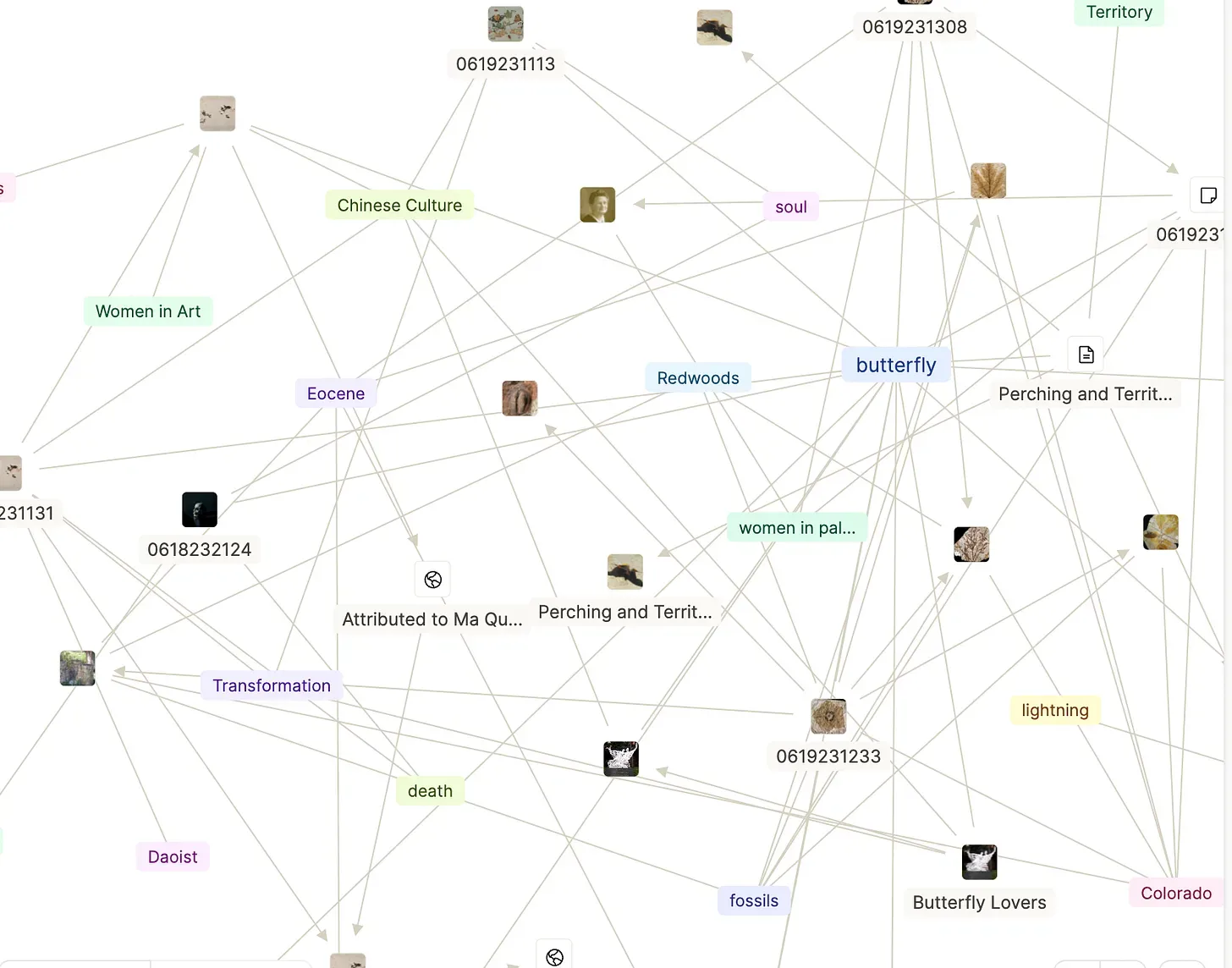
I guess Capacities is a little like a loom I can thread. A blessing for this spider-girl with too much thread and too little natural framing.
This is not a paid endorsement, btw. I am just so relieved, I want any of you who need this kind of relief to get it. Bonus? Capacities is free. The paid level is a way to support the project. Being a supporter comes with cool upgrades. The minimum requested support is $12 a month. I’m giving a bit more. But free can easily get you started.
My only grief with it so far? I wish there was a local-first option. Because Capacities is hosted on the cloud, it feels less in my control. And if it’s going to be my first and eventually second (???) brain, I want the option to do all my weaving off the cloud and on my computer.
It’s important to remember, this is a very new product, created by a very small team. I think that local-first will get onto the Capacities roadmap someday. Until then? Capacities is based out of the EU, which means it’s got to answer to EU Privacy/Data Collection laws. It’s not nothing.
Okay, back to our corners to weave wonderful things. I think people will look up to see. But a spider doesn’t weave to be witnessed, does she? She weaves to capture food, rest and, maybe, a little wonder for herself.
1 Hollier, Denis. “Notes (On the Index Card).” October, vol. 112, 2005, pp. 35–44. JSTOR, http://www.jstor.org/stable/3397642.



